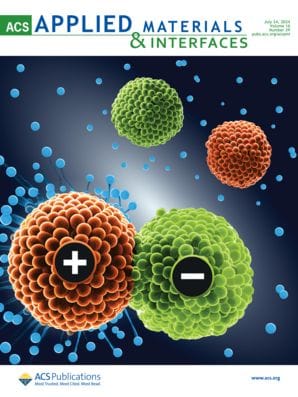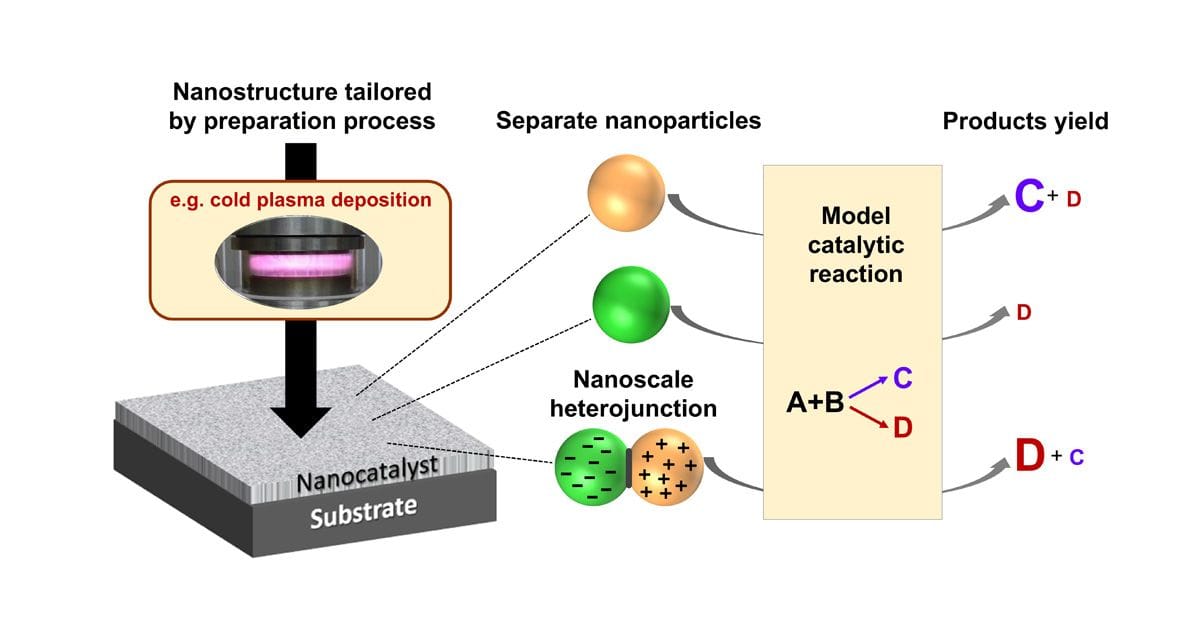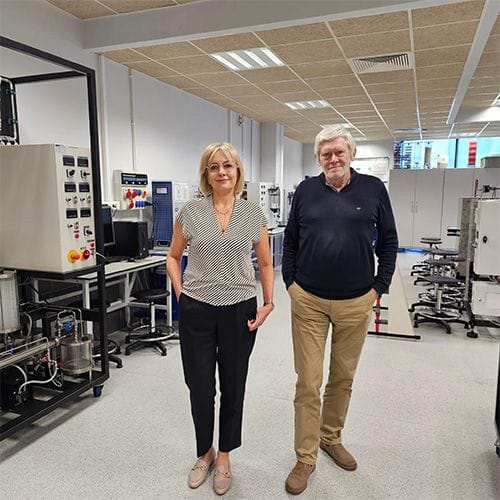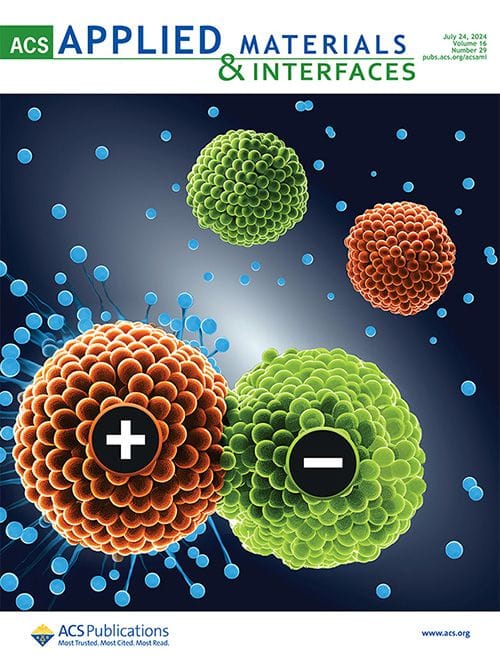Learn about one research team's path from an initial spark of an idea to a successful open access publication—and the tools, services, and choices that helped maximize its impact and visibility.

Nanocatalysis is an exciting field within nanoscience, which aims to revolutionize various chemical processes by leveraging the unique properties of nanoparticles. In this rapidly evolving area, researchers are continually uncovering groundbreaking methods to enhance chemical reactions at the nanoscale—and for many, quickly disseminating such results in a trusted, reputable journal is the most crucial component of amplifying the impact of scientific discovery.
Jacek Tyczkowski and Hanna Kierzkowska-Pawlak, professors from the Department of Molecular Engineering at Lodz University of Technology, Poland, are at the forefront of this dynamic field. Notably, they recently made significant strides in better understanding nanohybrid catalysts, publishing their Perspective in ACS Applied Materials & Interfaces. We caught up with the authors to learn more about their research and overall publishing journey. Join us as we follow their path from an initial spark of an idea to the successful open access publication—and some of the tools, services, and choices that helped maximize the impact and visibility of their findings.
Unveiling the Secrets of Nanohybrid Catalysts
Simply put, nanohybrid catalysts are catalysts composed of nanomaterials with distinct electronic structures. When two different nano-sized materials are combined in a catalyst, their interactions lead to enhanced chemical activity, creating a synergistic effect that is more effective than each material working separately.
Profs. Tyczkowski and Kierzkowska-Pawlak wanted to gain a deeper understanding of the underlying mechanisms behind the catalytic properties of nanohybrid catalysts. “By understanding the natural phenomena resulting from the interaction between two different materials and the related charge flow, we can rationally design novel catalysts,” they say. “This understanding is key to improving their catalytic properties.”
They discovered that the catalytic properties of nanohybrid catalysts, operating in thermal processes without the participation of light, can be explained by the classical concept of heterojunction formation at the interface between two materials differing in electronic structure. In the case of nanohybrids, when two different nanoparticles come into contact, electrical charges flow between them. As a result, these nanoparticles can become saturated with electric charges because their sizes are comparable to the charged regions formed at the junction. These connected nanoparticles, filled with electric charges, behave quite differently in contact with reactant molecules than when they are separated.

Classical Concept of Semiconductor Heterojunctions in the Approach to Nanohybrid Catalysts
DOI: doi/10.1021/acsami.4c08595
Take cobalt oxide and iron oxide, for example. Cobalt oxide nanoparticles are very active in creating methane from carbon dioxide and hydrogen, but iron oxide nanoparticles are much weaker in comparison. However, if we create a nanohybrid of these two oxides, it catalyzes the reaction of carbon dioxide and hydrogen to carbon monoxide, which—like methane—is a useful industrial substrate in contrast to carbon dioxide, which negatively impacts our climate. When creating this nanohybrid, the cobalt oxide nanoparticles hold a positive charge while the iron oxide nanoparticles are negatively charged, which explains the change in catalytic performance.
This understanding of heterojunction formation could be a game-changer for designing more effective nanohybrid catalysts, as previous literature has struggled with clearly explaining these complex interactions (often using “synergy” as a catch-all term). “Our approach offers greater insight than the traditional “trial and error” approach of randomly mixing different nanomaterials to create multicomponent catalysts and then see how they work,” the authors note.

Furthermore, they reinforced an extremely promising and already proven method for fabricating such nanohybrid catalysts—cold plasma deposition—and described how this technique can be used to design and control both the molecular structure and the nanostructure of nanohybrids with heterojunctions. The authors are optimistic that these insights will help researchers in catalysis, materials science, nanoscience, and beyond gain a better grasp of materials interactions and their influence on catalytic properties.
Choosing the Right Journal
Just as nanohybrid catalysis brings together different materials to create a powerful end product, the publishing process brings together many elements such as rigorous peer review, comprehensive author guides, access options, and other helpful tools to produce impactful published work and amplify its visibility to the largest audience possible.
For Jacek Tyczkowski and Hanna Kierzkowska-Pawlak, choosing the right journal was a critical step in the publication process, and publisher reputation also played an important role in her decision. “ACS has a good reputation in our field,” they say. The trust and credibility associated with ACS journals helped ensure that the research would reach a relevant, wide, and respected audience.

Finding a journal that offered the desired article type was another crucial factor. Since their findings were presented as a “point of view” rather than an original research study, the Perspective article type offered by many ACS journals seemed like a perfect fit. Ultimately, they decided to publish this Perspective in ACS Applied Materials & Interfaces—the journal not only offers the Perspective article type, but its broad scope also makes it an excellent fit for interdisciplinary topics such as nanohybrid catalysis.
Journal metrics, including Impact Factor (IF) and quartile ranking, also influenced the decision. Publishing in a high-ranking journal with a solid IF is important for many authors to ensure their research receives the visibility it deserves. ACS Applied Materials & Interfaces, with its strong metrics and trusted reputation, was well-positioned to provide the visibility and credibility needed to amplify the impact of Jacek Tyczkowski’s and Hanna Kierzkowska-Pawlak’s Perspective article.
Reaching a Wide, Global Audience with Open Access Publishing
Making scientific findings easily accessible to a broad, global audience is paramount for driving collaboration, innovation, and progress. Open access (OA) publishing options play a pivotal role by removing barriers to information and ensuring that research is freely available to anyone, anywhere.
Thanks to an institutional read and publish agreement with ACS, the authors were able to publish their article open access at no cost. This agreement reflects a growing trend of OA support among universities and research institutions who recognize its value in enhancing the visibility and impact of research. By publishing their idea OA, Profs. Tyczkowski and Kierzkowska-Pawlak helped contribute to the global body of knowledge and enabled their work to be discovered by the widest audience possible, including researchers, industry professionals, and policymakers who might not have access to subscription-based journals.
Maximizing Visibility with Supplementary Cover Art
Standing out is crucial in the competitive world of scholarly publishing. One effective way to enhance an article’s visibility is through supplementary cover art—this option, offered by ACS Publications and various other publishers, allows authors to submit unique artwork alongside their manuscript to be considered for a supplementary journal cover. This option appealed to the authors as a means of drawing more attention to their Perspective article on nanohybrid catalysts. “We believe that our Perspective is important for researchers in the catalysis field and wanted to increase the impact of this article through additional promotion,” Hanna Kierzkowska-Pawlak says.
Their cover, featured below, was one of four selected to be featured online for Volume 16, Issue 29 of ACS Applied Materials & Interfaces. It is currently featured on the Journal’s website and corresponding article pages, providing an eye-catching entry point for readers.

From Research to Recognition: Explore Tools and Services for Authors
The researchers at Lodz University of Technology's path from initial idea to successful published work showcases the critical role of making informed choices throughout the publishing process to maximize visibility and achieve professional recognition. By selecting a reputable journal, leveraging open access through a read and publish agreement, and choosing a supplementary cover art option, the authors worked to ensure her impactful Perspective on nanohybrid catalysts is accessible to a wide and appreciative audience.
Publishing high-quality research involves many decisions, each contributing to the visibility and impact of the work. ACS Publications offers a wide range of tools and services to support authors at every stage of their publishing journey, and there are many additional options available to help researchers achieve their goals:
- ACS Author Lab: This free online training course provides practical tips for writing and submitting scientific papers.
- ACS Reviewer Lab: This free online course will help you prepare for your first review, refresh your current peer review knowledge, and educate the next generation of peer reviewers.
- ACS Authoring Services: Our professional English editing, translation, and formatting services help ensure manuscripts are polished and ready for submission.
- ACS Guide to Scholarly Communication: This comprehensive guide covers everything from writing and submitting manuscripts to navigating the peer review process.
By taking advantage of these resources, authors can enhance the quality of their work, streamline the submission process, and maximize the impact of their research. ACS is committed to supporting researchers every step of the way, ensuring that trusted, high-quality science is widely available to the global community.
Additional Tools and Services:
ACS Open Science Resource Center
ACS Supplementary Covers Program
Related Blog Posts:
Growth by the Numbers: Working With the Community to Expand in Open Access Publishing
